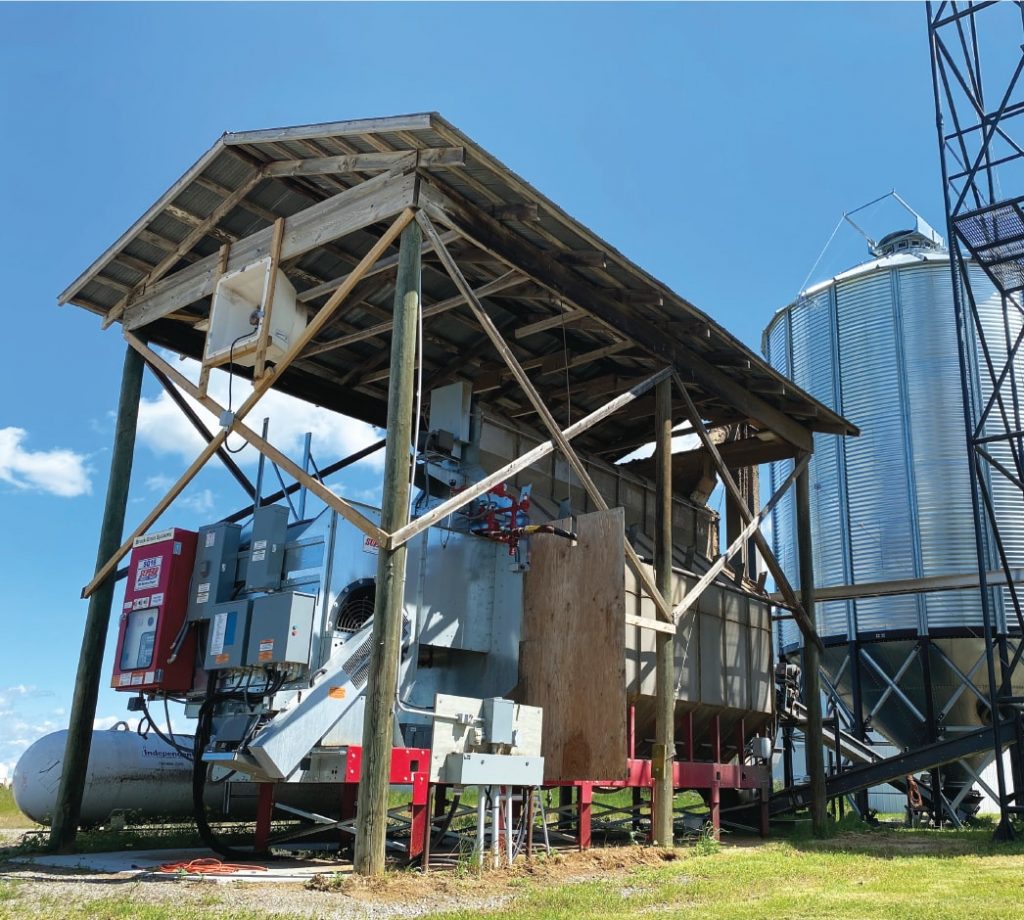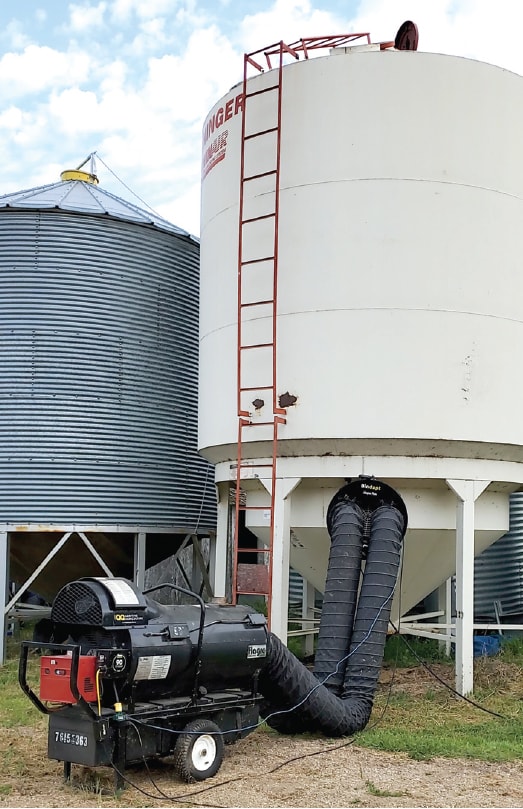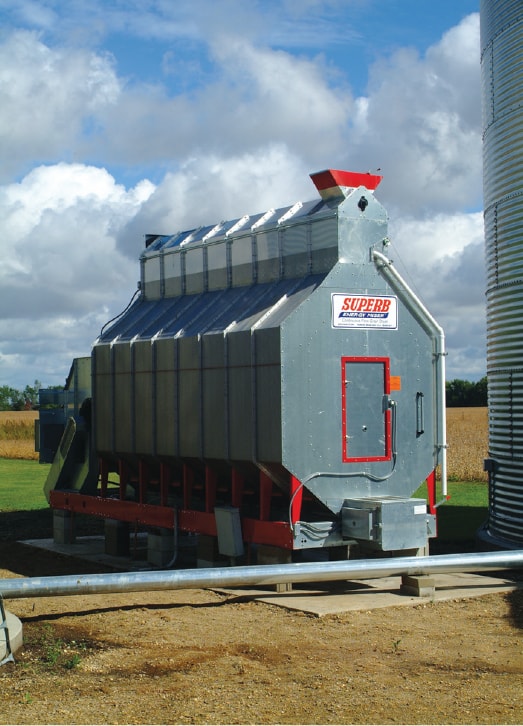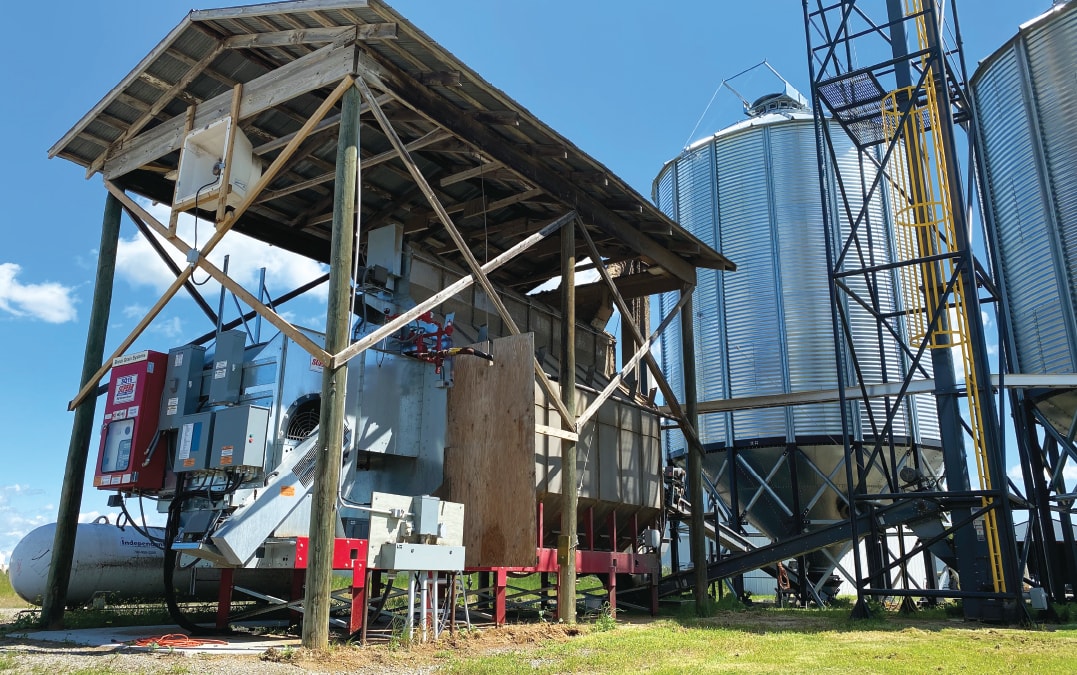Farmer experiences with on-farm drying systems
Farmers who’ve set up their own grain drying systems praise the convenience and return on their investments.
Shawn Senko, Canola Council of Canada agronomy specialist and farmer, says he chose a diesel-powered supplemental heater as a cheap way to get started drying grain.
His 400,000-btu diesel supplemental heater, with hoses and adapter plates, cost $3,000, and aeration fans were already on the bins, Senko explains. His system also has a control box to turn the heater off and on as needed to maintain proper drying temperatures.

Jon Kauffman of Prairie West Farms at Tofield, Alta., set up a Brock Superb 320-bushel Model SQ16 dryer for $72,000. A 12,000-bushel wet bin and 7,000-bushel dry bin, plus augers and electric motors, cost an additional $56,000.
“The biggest reason we went with the Brock Superb was fuel efficiency as well as its ability to run largely independent of supervision,” Kauffman says. This allows him to harvest and dry at the same time, as well as dry through the night, without someone watching over it.
“The biggest reason we went with the Brock Superb was fuel efficiency as well as its ability to run largely independent of supervision.”
In 2019, Kauffman made the improvement to run chain drags and legs on both the wet and dry side after wearing out two augers in the first couple years.
“The decision to go to legs will substantially reduce wear and tear,” he says. “The legs are also much quieter and more gentle on grain.”
Cost per bushel
Kauffman’s set up is plumbed for both natural gas and propane, and he uses the latter during the later months of the season when colder temperatures prevent his gas line from keeping up.
His natural gas cost is one to five cents per percentage point of moisture per bushel, but propane’s significantly more at eight to 12 cents per point.
Senko says his costs are heavily dependent on outside temperatures and the humidity of the ambient air.
“It’s much more economical to dry earlier in the season, or to cool grain for storage, then dry it in the spring,” Senko says.


Return on investment
Senko’s motivation behind his set up was to dry grain for the purpose of marketing. “Some elevators dry, but they aren’t always taking grain, or the price is low,” Senko says.
Kauffman says his capital and variable costs of $256,000 compare favourably to the $277,000 he estimates elevators would have charged to dry the over one million bushels he’s dried since 2017. He’s also able to cash in on premiums, especially in 2019 when there was a glut of tough grain.
“We were able to harvest early and take advantage of over-drying premiums at some elevators, which tacked on up to an additional dollar a bushel on a good chunk of our wheat,” Kauffman says.
With dry crops for offer, sales are a snap as elevators are always looking for it. Kauffman’s been able to move the majority of his grain before the end of November, even though some contracts were for March delivery.
Custom drying has provided an additional revenue stream for Kauffman, who, after his first year, was able to dry at least enough custom to cover his own drying costs. “In 2019, we custom-dried 284,000 bushels on top of our entire production from 4,400 acres.”
Dry years
Is the investment still worth it if there are several consecutive dry years? Senko says yes. For him, his investment was small so the risk was low, he says.
The reduction of stress and knowing you’re able to start your harvest early also has value, Kauffman says. “I would venture to guess you will never regret it. I know I would feel lost without ours at this point,” he says.





